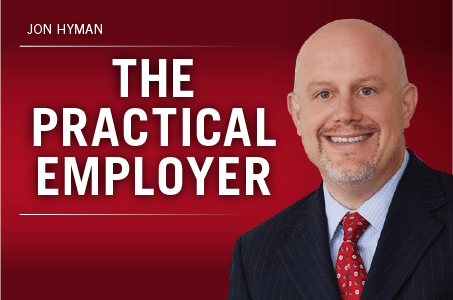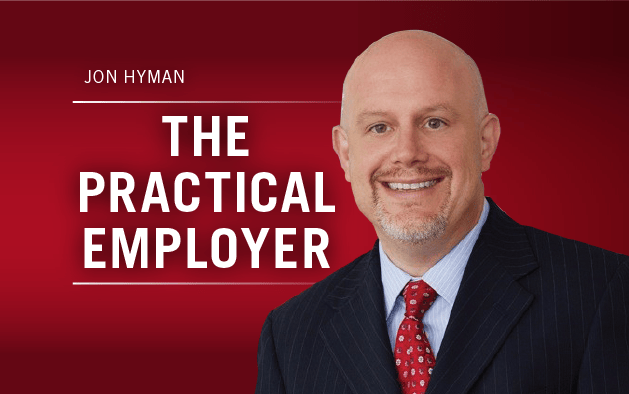Where are we at with <insert random request for information>?”
If you hear this type of question from a new boss as an HR leader, be alert. This question is not an invitation to list what’s been done. It’s a test.
Put on a helmet, kids, because I’m about to give you some tough love.
In the future, all of you reading this will get a new boss. Most of you will have five to 10 new bosses across the rest of your career, which is reflective of how chaotic work is for our generation and the general pace of change.
Some of those new bosses are going to have manageable expectations. But it’s important to note that many of them are going to expect new things out of you, and they generally won’t be that concerned with your feelings.
Many of the new bosses are going to expect you to be great in the way you do HR. The problem with that? Their definition of great is going to be different than yours, and their definition is the only one that counts.
Here’s how your interactions with a new boss who expects you to be great are going to go:
1. The new boss comes in and things appear fine. This is called the honeymoon period. All parties are getting to know each other, and your new boss is forming opinions of what he’s got related to talent on the team. There are lunches, light meetings and even some jokes!
2. You’re presented with a challenge, and you do what you do, and what you have always done. Let’s assume the challenge is about recruiting, and the boss asks you what you’re doing to recruit developers. You reply with what you’ve always done, which is to post far and wide and pray those postings are effective. Note that you didn’t do more than what you did in the past in this area. It was out of your comfort zone, and what you had always done had always been enough.
3. The new boss expresses on some level that you’ll need to think differently to meet expectations. How your new boss frames this request depends on the challenge, but it generally follows a “What else you got?”
4. The new boss doesn’t tell you what more looks like, but will tell you if they are impressed by what you’re doing. That’s why they’re the boss. If they have to tell you what to do, they’re not sure why they need you on the team. They won’t tell you what to do, but they will compliment you if you’re on the right track and if you keep them updated on progress.
5. Silence is dangerous. Long stretches of silence are generally accompanied by you being fired or someone else being hired above you. The most dangerous thing you can do with a new boss is not engage. If you accept silence and refuse to get in front of the relationship, that’s you doing what you’ve always done. Organizational change usually follows long periods of silence.
I know. Things were fine before the new boss came along. You’re not sure why you have to change, and it generally seems unfair.
Also read: How New Executives Can Mitigate Employee Resistance
I’m not here to argue with how you feel. I’m just here to tell you that most of us will have at least one new boss who acts like this. Your cadence with that new boss is going to feel almost exactly how I outlined above — if you look closely.
The danger is that you don’t make a move to get in front of it. When the new boss comes in and immediately wonders if you suck at HR, it’s not an automatic death sentence. You can adjust to the new expectation and perhaps even learn along the way.
To react to the new boss who has higher expectations, you’ll have to be assertive in changing your day-to-day routine. While that’s hard enough, it’s only the tip of the iceberg. Reinventing how you are doing HR also comes with confrontation of others — vendors, the people you manage on your HR team and the managers and employees in the client groups you support.
You’re on the clock with any new boss both as an HR leader and a line HR pro. Whether you report to a CEO as an HR leader or a new VP of HR as a line HR pro, you’re likely to be tested.
Also from Kris Dunn: Management According to the Leadership Book
You have to play offense. Don’t be fooled by long periods of silence, because low engagement from your new boss can represent an extended severance period, the kind where everyone knew but you.
Doing what you’ve always done is dangerous.






 A federal court jury in Miami has awarded a hotel dishwasher $21.5 million after concluding that her employer failed to honor her religious beliefs by repeatedly scheduling her on Sundays, and then firing her.The hotel argued that it had no idea that she was a missionary or had requested Sunday off. Her lawyer, however, disagreed. “There were letters in [her personnel] file and her pastor went down there.”
A federal court jury in Miami has awarded a hotel dishwasher $21.5 million after concluding that her employer failed to honor her religious beliefs by repeatedly scheduling her on Sundays, and then firing her.The hotel argued that it had no idea that she was a missionary or had requested Sunday off. Her lawyer, however, disagreed. “There were letters in [her personnel] file and her pastor went down there.” 2019 is officially the year that my Worst Employer contest went international.
2019 is officially the year that my Worst Employer contest went international.
 The tagline: “Bullying. Harassment. Is this the best a man can get? It’s only by challenging ourselves to do more, that we can get closer to our best. To say the right thing, to act the right way.”
The tagline: “Bullying. Harassment. Is this the best a man can get? It’s only by challenging ourselves to do more, that we can get closer to our best. To say the right thing, to act the right way.” The Equal Pay Act requires that an employer pay its male and female employees equal pay for equal work. The jobs need not be identical, but they must be substantially equal. Substantial equality is measured by job content, not job titles.
The Equal Pay Act requires that an employer pay its male and female employees equal pay for equal work. The jobs need not be identical, but they must be substantially equal. Substantial equality is measured by job content, not job titles. How did the oboist end up earning more? According to the lawsuit, the orchestra lured him away from the Metropolitan Opera Orchestra with the promise of higher pay. Rowe claims that she should be paid equally for similar work, regardless of the circumstances of his recruiting.
How did the oboist end up earning more? According to the lawsuit, the orchestra lured him away from the Metropolitan Opera Orchestra with the promise of higher pay. Rowe claims that she should be paid equally for similar work, regardless of the circumstances of his recruiting.
